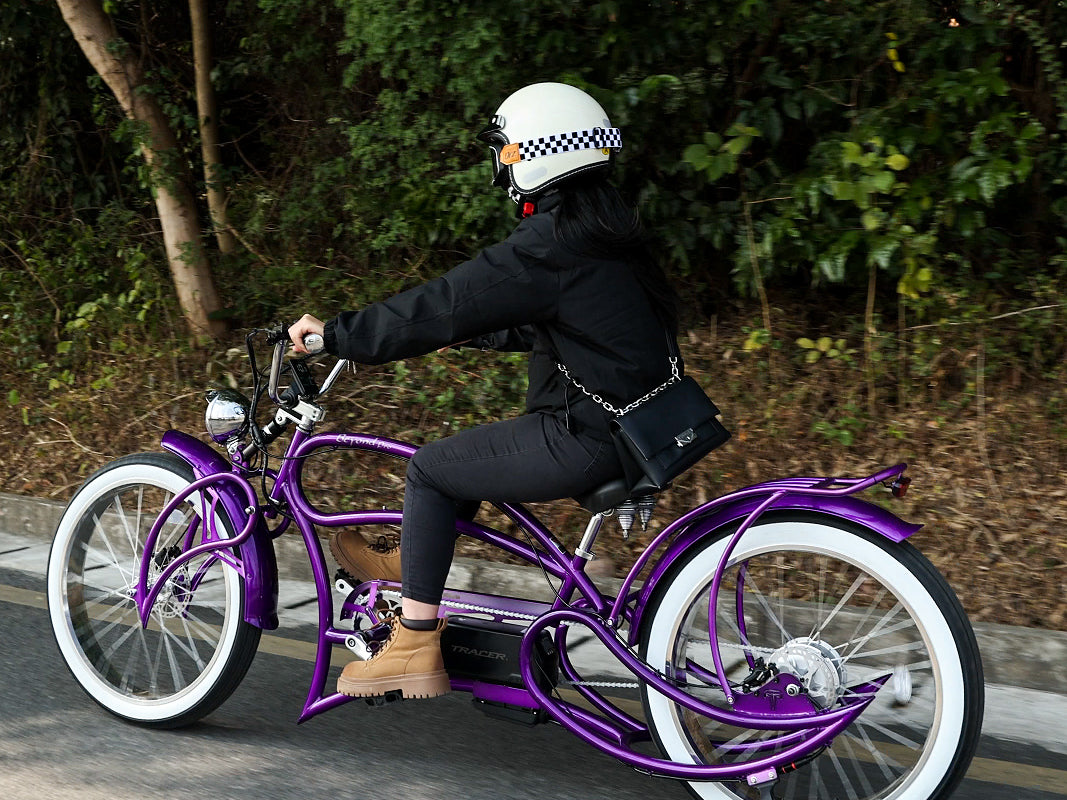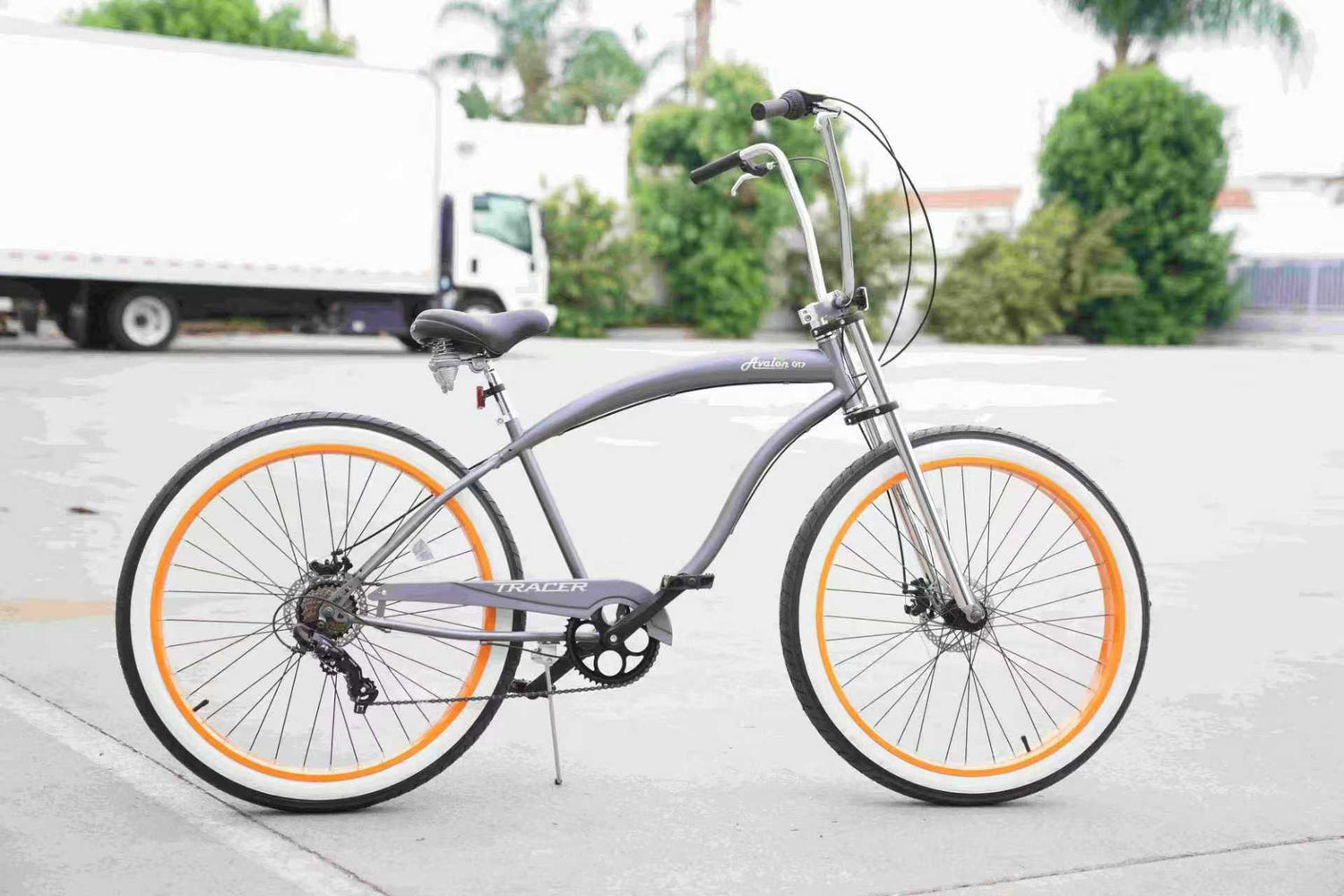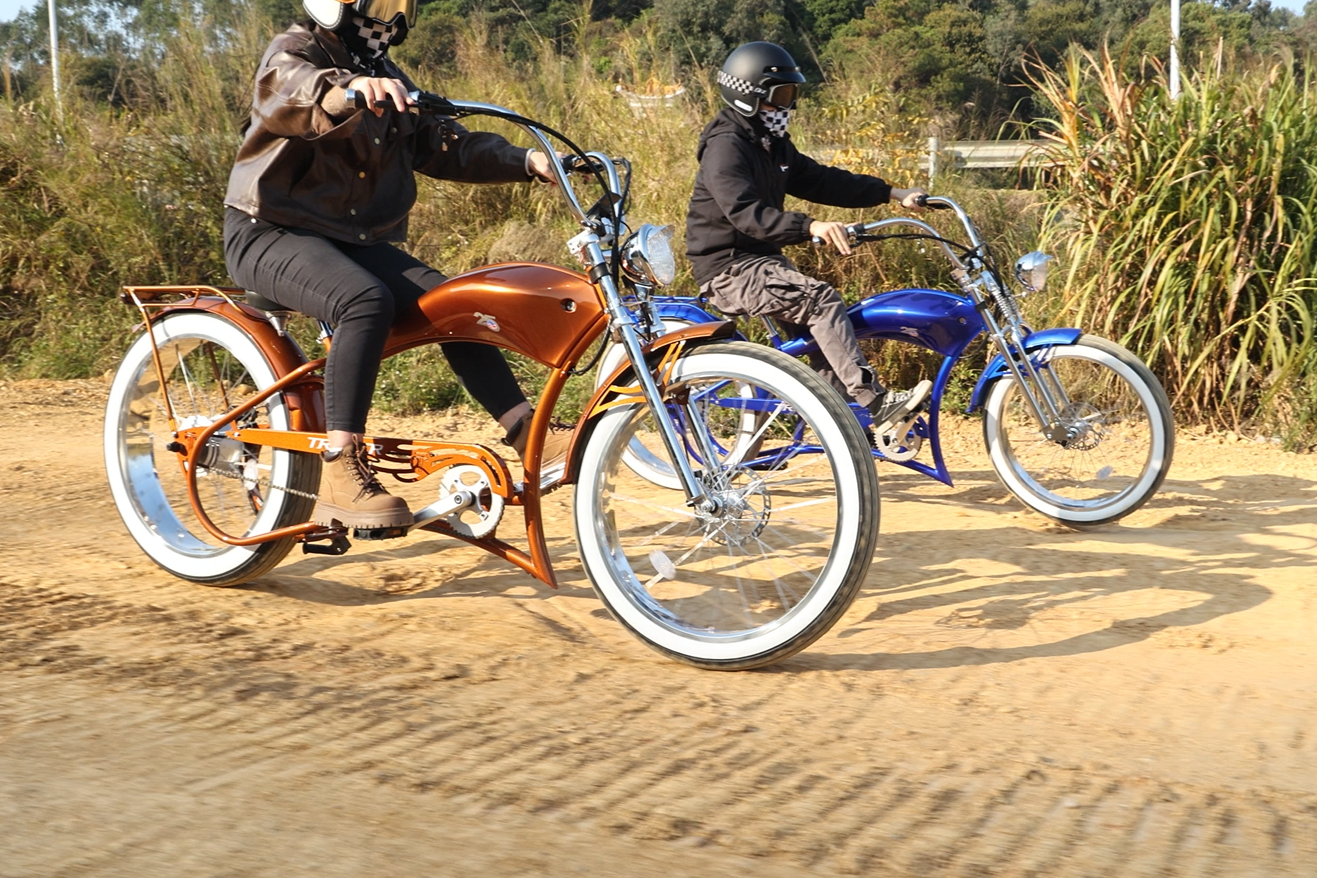Cruiser bikes have long been a symbol of relaxed, comfortable cycling. With their distinctive upright riding position, wide seats, and classic styling, these bikes evoke images of leisurely rides along beachfronts and through neighborhood streets. As you consider purchasing a cruiser bike, one important question often arises: Do all cruiser bikes come equipped with coaster brakes? This comprehensive guide will explore the various braking options available on cruiser bikes, helping you make an informed decision for your cycling needs.
What Are Coaster Brakes?
Coaster brakes—also called foot brakes or backpedal brakes—are a braking system built into a bicycle’s rear hub. To activate them, riders simply pedal backward, which triggers the internal braking mechanism. This design eliminates hand levers and cables, resulting in a clean, minimalist look closely linked to traditional cruiser bikes.
First gaining widespread popularity in the mid-20th century, coaster brakes come with several benefits:
- Simplicity: Fewer moving parts mean less upkeep is needed.
- Clean aesthetics: No visible cables or brake levers clutter the bike’s design.
- Ease of use: Their operation is intuitive, making them ideal for beginners.
- Weather resistance: They hold up better than some rim brakes in rain or dirty conditions.
That said, coaster brakes have drawbacks too—they offer less precise control and weaker stopping power compared to many modern braking systems.For cruiser bike riders who prioritize simplicity over high performance, they remain a solid choice, but they’re not the only option.
Brake Types in Cruiser Bikes
While coaster brakes are a traditional staple for cruisers, today’s market offers a range of braking options to suit different needs:
Coaster Brakes
As mentioned, these are activated by backpedaling and remain most common on single-speed cruiser bikes. They shine in flat terrain and casual rides, but their limited control over braking force makes them tricky on hills.
- Practical example: Cruiser bikes designed for beachfront rides, where flat paths and leisurely pacing are the norm, often rely on coaster brakes for their low-maintenance design. For instance, Tracer Scorpion Pro DTS 26’’ Chopper Bike---a single-speed model with classic chopper styling, Fat white tires, and a retro U-type handlebar-features a KT coaster brake, perfectly suited for relaxed rides along the beach or city streets.
- Maintenance tip: Coaster brakes require occasional checks for hub wear, but unlike hand-operated systems, they rarely need cable adjustments.

Linear-Pull Brakes (V-Brakes)
These hand-operated brakes use cables to pull pads against the wheel rim, offering key advantages:
- Better modulation than coaster brakes
- Easier control during hill descents
- Simpler maintenance than disc brakes
- Lower cost compared to disc brake systems
Disc Brakes
The most advanced choice, disc brakes feature a metal rotor attached to the wheel hub, with calipers squeezing the rotor to stop the bike. Their strengths include:
- Superior stopping power across all conditions
- Excellent modulation and precise control
- Consistent performance in wet weather
- Stronger performance on hills and varied terrain
Practical example: Modern cruiser bikes built for urban commuting or multi-terrain rides often opt for disc brakes. Tracer’s Raider Pro DS7 26” Stretch Beach Cruiser Bike, with a Shimano 7-speed derailleur, uses a 180mm mechanical disc brake to complement its versatility, delivering reliable stopping power for dynamic rides.

Other Brake Types
Some cruisers may include less common options like drum brakes (enclosed in the hub) or caliper brakes (similar to those on road bikes), though these are far less prevalent in the cruiser category.
Further Reading: Beach Cruiser Brake Systems: Everything You Need to Know
Do All Cruisers Have Coaster Brakes?
The short answer is no—coaster brakes aren’t universal on cruiser bikes. While they remain a popular choice, especially on traditional single-speed models, the modern cruiser market has expanded to include diverse braking options.
Today’s cruiser brake configurations depend on several key factors:
- Intended use: Beach cruisers built for flat coastal areas often stick with coaster brakes, while urban or multi-terrain cruisers tend to adopt more advanced systems for better control.
- Price point: Budget-friendly cruisers typically feature coaster brakes, while premium models often upgrade to disc brakes or high-quality linear-pull systems.
- Gearing: Single-speed cruisers most commonly use coaster brakes, but multi-speed cruisers almost exclusively rely on hand-operated brakes—coaster brakes are incompatible with external gear setups.
- Brand philosophy: Some manufacturers preserve tradition with coaster brakes, while others prioritize innovation with modern braking technology.
Brake Types Face-to-Face
Coaster Brakes vs. Linear-Pull Brakes
For everyday use, these two systems differ significantly:
Coaster Brakes
- Strengths: Stand out for simplicity and aesthetics, ideal for riders who prefer a clean handlebar (no levers or cables).
- Weaknesses: Require shifting foot position to brake, which feels less intuitive in emergencies. They also offer limited control on descents, as gradual braking force adjustment is difficult.
Linear-Pull Brakes
- Strengths: Deliver better modulation, letting riders apply varying braking force—safer for hilly areas and emergency stops. Hand levers keep feet in optimal pedaling position.
- Weaknesses: Need occasional cable adjustments and pad replacements.
Coaster Brakes vs. Disc Brakes
This comparison reveals stark performance gaps:
Coaster Brakes
- Strengths: Maintenance-free and weather-resistant, suitable for casual flat-terrain rides.
- Weaknesses: Lack stopping power compared to modern systems, often insufficient for steep hills or emergencies.
Disc Brakes
- Strengths: Offer superior all-around performance—consistent stopping power in wet conditions, excellent modulation, and better downhill control.
- Weaknesses: Add weight, complexity, and cost. They require periodic maintenance, including pad replacement and occasional bleeding for hydraulic setups.
For a focused look at how these brake types perform on stretch cruisers specifically, see Choosing the Right Brakes: Hand Brakes vs. Coaster Brakes on Stretch Cruiser Bikes.
How to Choose the Right Cruiser Bike Brakes
For Urban Commuters
If city riding is your main focus, prioritize linear-pull or disc brakes. These systems shine in traffic, offering precise control to navigate sudden obstacles and reliable stopping power for frequent stop-and-go scenarios. Their ability to modulate braking force makes them a smart choice for busy urban environments—a key consideration for cruiser bike riders who need to react quickly in crowded streets.
For Beach and Leisure Riding
On flat terrain with casual, relaxed rides, traditional coaster brakes are often more than enough. Their simplicity, reliability, and minimal maintenance needs align perfectly with riders who value ease of use over high-performance features. Many beach cruiser enthusiasts prefer them for their retro feel and hassle-free operation.
For Long-Distance and Multi-Terrain Riding
When your adventures span beyond flat paths—including hills, varied surfaces, or changing weather—disc brakes are a worthwhile investment. They deliver the consistent control and stopping power needed to tackle diverse conditions with confidence.
Conclusion
While coaster brakes remain a traditional staple for cruiser bikes, they’re far from the only option in today’s market. Modern cruisers now offer a range of braking systems, each tailored to different needs, preferences, and budgets.
The best choice hinges on your intended use, riding environment, and personal tastes—there’s no universal solution. What matters most is a brake system that gives you confidence, control, and enjoyment on every ride.
As you weigh your options, focus on where and how you’ll ride most often. If possible, test different types to feel the difference. Rest assured, your perfect cruiser bike—with the right brakes for you—is waiting. For more guidance on selecting the right cruiser overall, refer to Cruiser Bike Buying Guide: Expert Advice on Choosing the Best Brand and Style.





Leave a comment
This site is protected by hCaptcha and the hCaptcha Privacy Policy and Terms of Service apply.